


Liverworts
Conocephalum conicum
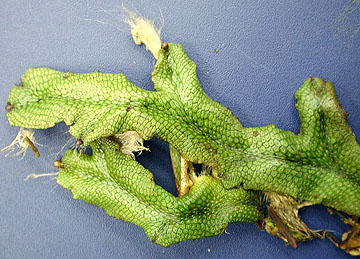 |
| Conocephalum conicum |
Conocephalum conicum, commonly known as the snake liverwort, is the largest of the thalloid liverworts. Its pale to dark green thallus can grow up to 20 cm long. The dorsal surface of C. conicum is covered with tiny hexagons, which makes the entire thallus seem snake-like:
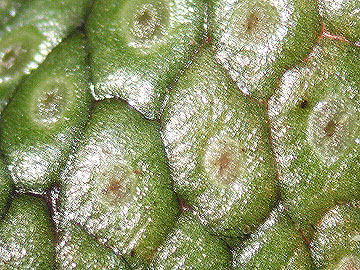 |
| Conocephalum conicum - closeup of hexagonal leaf cells with central pore |
In the centre of each hexagon is a pore, which is actually a break in the epidermis over top of an air chamber. The following figure shows a cross section through the thallus of C. conicum. Can you label the pore, air chamber, parenchyma, and photosynthetic filaments?
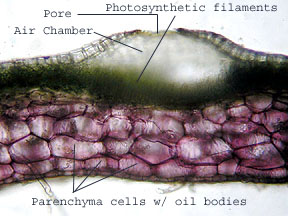 |
| Conocephalum conicum thallus cross section - The most surprising feature of C. conicum shown in this cross section is the mass of purple parenchyma cells that compose most of the organism. Another interesting feature is the blister-like bulge in the epidermis. It is a pore. Notice the mass of green filaments on the floor of the air chamber. As you would have guessed, these filaments contain chloroplasts, so they are photosynthetic. A few rhizoids are visible on the ventral side of the liverwort |
This liverwort is widespread across Canada and it can usually be found on moist rocks or wet inorganic soils.
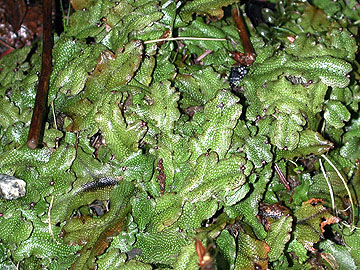 |
| A patch of snake liverwort (Conocephalum conicum) found in Stanley Park, Vancouver B.C. |
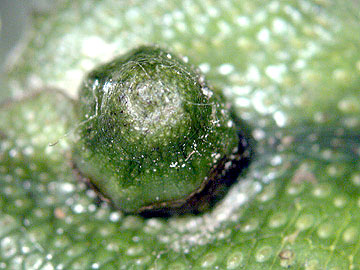 |
| Conocephalum conicum - a young archegoniophore (female sex organ) |


